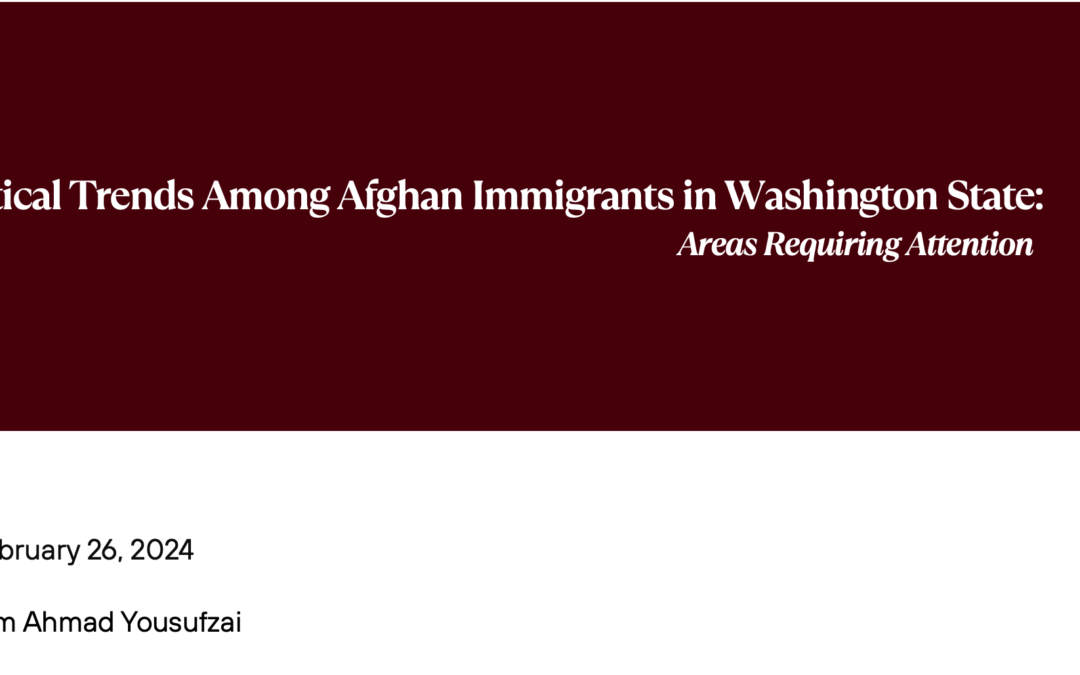Background:
The population of Afghan immigrants in the United States (U.S.) has experienced significant growth in
recent decades. It increased from around 4,000 in 1980 to 28,000 in 1990 and 45,000 in 2000. Within
two decades, there was a notable surge in Afghan immigrants entering the country, reaching
approximately 132,000 in 2019. Additionally, the U.S. withdrawal and subsequent collapse of the
Afghan government in August 2021 into the hands of the Taliban led to an influx of Afghan immigrants
to the U.S. By September 2022, some 86,000 Afghans had moved to the U.S. through the Operation
Allies Welcome (OAW) program.
Utilizing recent survey data collected by the Porsesh Policy Research Institute (PR) from Afghan
immigrants in Washington, this paper aims to provide some major trends of the resettlement
experiences of Afghan immigrants and their integration in Washington State. By comparing those who
moved to the U.S. before and after the collapse of the Afghan government in August 2021, the study
examines and provides a comparative analysis of educational and employment status, immigration
pathways, access to and utilization of health services, and integration into Washington’s society.

